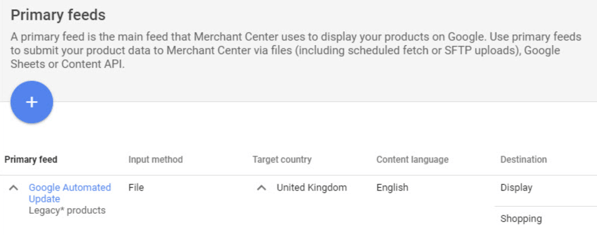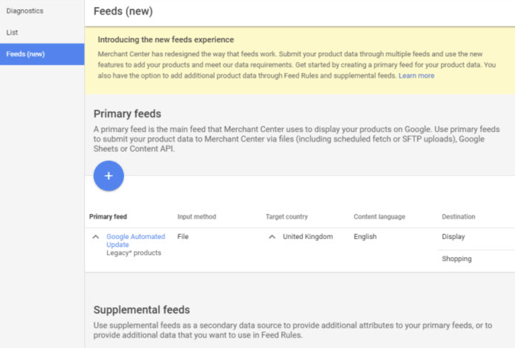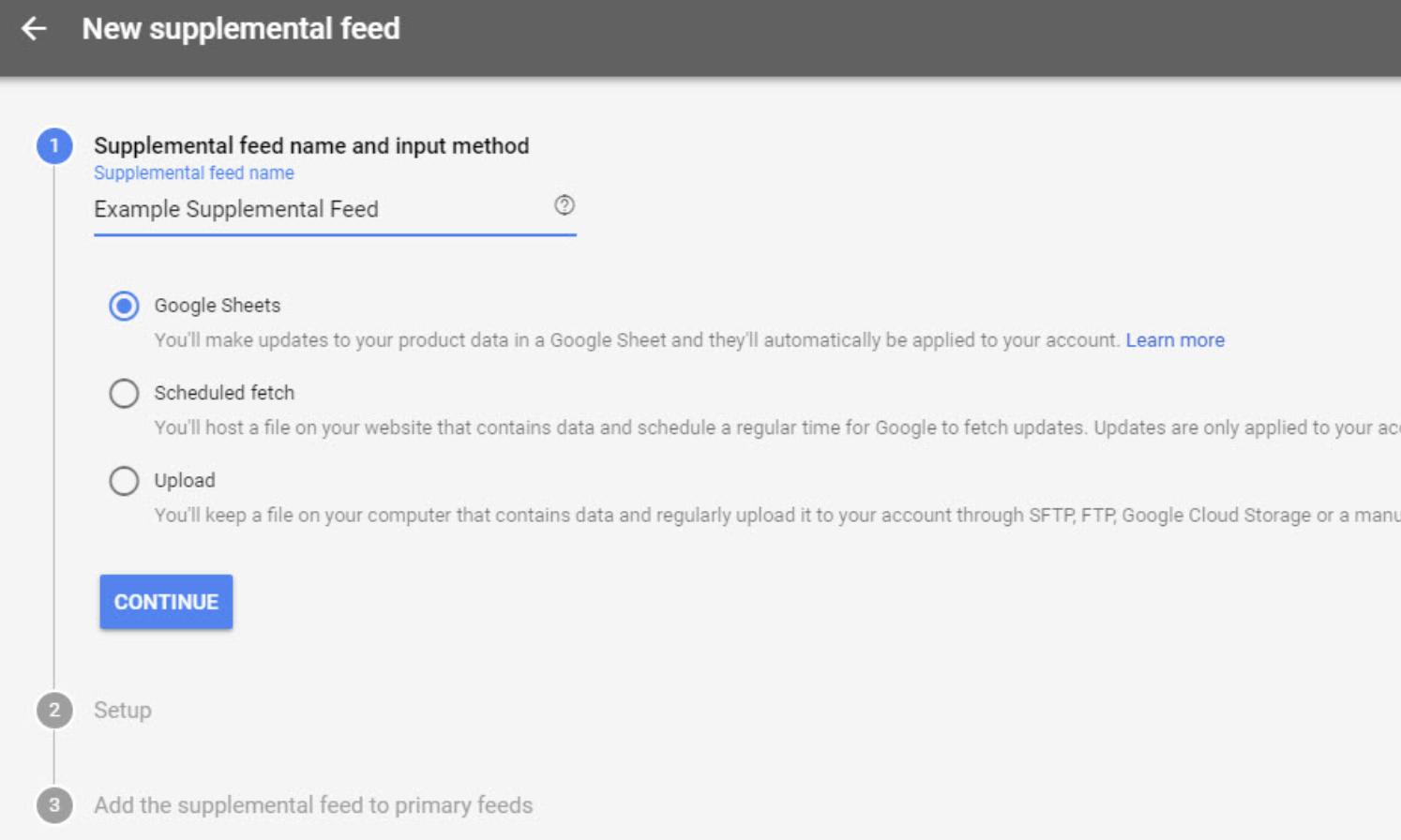E-Commerce Essentials: Optimising Primary & Supplementary Feeds
Posted on March 26, 2024 (Last Updated: March 26, 2024)
Our deep dive into the 7 most essential feeds on Google Shopping continues with looking into Primary and supplementary feeds. Usually the simplest yet the backbone of your setup.
If you ever advertised on Google, then you know that Google Merchant Center is a competitive market to be. Managing and optimising your product feeds often seems redundant and tedious, but it plays a huge role in the success of your campaigns.
And let’s admit it, no one likes putting in effort without harvesting any benefits so you better read carefully.
Understanding the slight differences and applications of primary and supplementary feeds is necessary for digital marketing professionals and e-commerce experts aiming to maximize product visibility and performance on this platform.
Primary Feeds: The Foundation of Your Product Listings
What purpose it serves you may ask?
Central Hub for Product Information - the most straightforward depiction. The Primary Feed serves as the central repository for all your product information. It's where Google pulls data to populate your Shopping ads, ensuring that potential customers see the most accurate and relevant information about what you're selling. Easy peasy, right? Not so fast.
Primary feeds act as the cornerstone of your product information infrastructure within Google Merchant Center.

These comprehensive datasets include vital details about your products, such as:
- Product Titles: Concise yet descriptive titles that capture the essence of the product, incorporating important keywords to improve search relevance.
- Descriptions: Detailed overviews of the products, highlighting key features and benefits, and including relevant keywords to enhance searchability.
- Prices: Accurate pricing information, reflecting any sales or discounts where applicable.
- Images: High-quality images that accurately represent the product, adhering to Google’s image requirements to ensure a positive user experience.
Primary feeds are typically generated from your e-commerce platform or inventory management system and require regular updates to ensure that all listed information is current and accurate.
The frequency of updates can vary depending on the volatility of your inventory and pricing but is often set daily to maintain the integrity of the product listings.
The creation and maintenance of primary feeds demand a meticulous approach, ensuring that all product information is formatted according to Google's specifications.
This includes the correct use of attributes and values, adherence to character limits, and the implementation of structured data to facilitate the accurate and efficient processing of your product listings.
And guess what? That is one of the reasons why you need a reliable and flexible product feed management platform, one that ensures personalisation and streamlines your processes such as WakeupData.

Key Components of the Primary Feed
Now, once we have cleared out the basics, let’s look into the key components of a primary feed and more importantly, what you should keep in mind when creating them.
- Product Titles and Descriptions: should be detailed, keyword-rich, and customer-friendly. They play a crucial role in not just attracting attention but also in matching user searches.
- Effective titles and descriptions improve SEO and click-through rates.
Did you know that we just announced the release of our newest feature? An AI tool that will help you generate effective product titles and descriptions in bulk and much more? You can read about it here. - Pricing and Availability: Accurate and competitive pricing information, along with real-time availability, helps in managing customer expectations and reduces the likelihood of cart abandonment.
We have such an add-on - read about it here. - High-Quality Images: Product images are a critical component. High-resolution images that accurately represent the product can significantly impact click-through rates and conversion rates.
- Product Categories and Types: Proper categorisation helps Google place your products in the right search queries, making it easier for users to find what they're searching for.
- Brand and GTIN (Global Trade Item Number): Including brand names and GTINs helps in distinguishing your listings from others, especially for products that face a lot of competition. It also assists in Google's product identification process.
At WakeupData, we always build platform updates based on customer feedback and that is why we offer an Image transformation tool, a background remover tool, near-real-time data with our hourly runs and much more. Check our platform and add-ons here and find the best solution for your business.

Recommended practices
It won’t be us if we do not share our know-how with you so, here you go, our recommended practices:
Keep your product data up to date: Regularly update your feed to ensure that product information, availability, and price are always correct.
Use high-quality photos: Clear, high-resolution photographs are essential for efficiently promoting your items and attracting potential buyers.
Create intriguing titles and descriptions. Create informative and compelling product names and descriptions that use important keywords to improve exposure in search results.
Use optional attributes: Provide additional product information that may be relevant to your target audience to boost ad effectiveness and user experience.
Monitor and Optimise: Regularly evaluate the performance of your primary feed and make any required changes to increase its efficacy and the success of your Google Shopping advertisements.

Supplementary Feeds: Enhancing Your Product Listings
Okay, so the primary feed is one thing, we cleared the air around it, but how about supplementary feeds? Supplementary feeds provide a flexible mechanism to augment the data in your primary feeds with additional, valuable information.
Why does it matter?
- Enhanced Product Information: The Supplemental Feed allows you to augment your product listings with additional details that might not be included in your Primary Feed. This could range from more granular attributes to promotional texts, providing a richer data set for Google Shopping.
- Agility in Updates: Retail dynamics, such as price changes, seasonal promotions, or stock availability, require swift updates to your product listings. The Supplemental Feed offers the flexibility to make these updates quickly and efficiently, ensuring your Google Shopping presence reflects real-time information.
- Customization and Personalization: Use the Supplemental Feed to tailor your product offerings to specific campaigns, geographical regions, or customer segments. This level of customization can enhance the relevance of your listings to potential buyers, improving engagement and conversion rates.

These feeds are instrumental in customizing and optimizing your product listings for specific marketing objectives. Key enhancements offered through supplementary feeds include:
- Custom Labels: These allow for the segmentation of products within your Google Ads campaigns, enabling targeted bidding strategies based on product categories, margins, or seasonal relevance.
- Promotions: Integration of promotional data, such as discount codes or special offers, can make your listings more attractive and improve click-through rates.
- Shipping Information: Detailed shipping information, including shipping costs, delivery times, and shipping restrictions, helps provide clarity to potential buyers, improving the overall shopping experience.

Supplementary feeds are linked to primary feeds and are processed in conjunction with the primary feed data.
This relationship enables the dynamic update of product information without altering the foundational primary feed. For example, if a product is part of a temporary promotion, the supplementary feed can add this information to the existing product listing in the primary feed, thereby highlighting the promotion without modifying the core product data.
Strategic Implementation for Optimal Performance
The strategic use of primary and supplementary feeds in Google Merchant Center is a powerful tool for enhancing product visibility and appeal in Google Shopping. By meticulously curating and regularly updating these feeds, merchants can ensure their product listings are optimized for both search relevance and shopper engagement.
Moreover, leveraging the capabilities of supplementary feeds to add targeted information enables advertisers to tailor their approach to specific audiences and marketing goals, ultimately driving higher conversion rates and ROI.
In practice, this requires a deep understanding of the platform's requirements and the ability to analyze performance data to continually refine feed content. Collaboration between marketing, IT, and product management teams is often necessary to ensure the seamless integration and ongoing optimization of product feeds
In summary, mastering the intricacies of primary and supplementary feeds in Google Merchant Center is a technical and strategic endeavour that can significantly impact the success of Google Shopping campaigns. By leveraging these tools effectively, specialists can enhance product listings, cater to specific customer needs, and achieve a competitive advantage in the digital marketplace.
Creating and managing primary and supplemental feeds within Google Merchant Center is a fundamental task for e-commerce professionals aiming to optimize their online presence on Google Shopping. These feeds serve as the conduit through which your product data flows into the Merchant Center, allowing it to be displayed to potential customers. Below, we delve deeper into the specifics of creating and leveraging these feeds effectively.-3.png?width=1920&height=1080&name=Article%20Banners%20(6)-3.png)
Creating a Primary Feed: The Gateway to Google Shopping
A primary feed acts as the cornerstone of your product data strategy, serving as the main data source for the Merchant Center to access and showcase your product information. Here’s a more detailed look at its creation and management:
- Data Inclusion and Exclusion: Primary feeds are pivotal for adding new products to your Google Shopping listings or removing outdated or unavailable items. They serve as the master record of what products are available for display.
- Localization: Setting language and country targeting in your primary feed is essential for reaching the appropriate audience. Tailoring your feed to specific markets can dramatically improve the relevancy and performance of your listings.
- Feed Rules: The Merchant Center offers the capability to create feed rules, which automate the transformation of your product data to meet Google's requirements or to optimize the data for better performance. These rules include mapping your internal product categories to Google's product categories, optimizing titles and descriptions, or adjusting pricing information.
The creation of a primary feed requires careful attention to Google's data specifications and the strategic structuring of your product information to maximize visibility and engagement.
Creating a Supplemental Feed: Enhancing Your Product Data
Supplemental feeds provide a way to enrich or update the product data contained in your primary feeds without altering the primary data structure. These feeds can include:
- Attribute Enhancements: Adding additional details or updating existing ones, such as product attributes, to complement the information in your primary feed. This could involve specifying more detailed product categorizations, adding custom labels for campaign segmentation, or updating inventory levels.
- Non-Disruptive Updates: Since supplemental feeds cannot add or remove products, they offer a non-disruptive means to refine your product listings. They are especially useful for temporary changes, like promotional details or temporary price reductions.
Strategic Application Across Accounts
For businesses managing multiple client accounts through a multi-client account (MCA) structure, feed rules and supplemental feeds offer a layer of flexibility and control:
- Multi-Account Management: Feed rules and supplemental feeds can be defined at the MCA level and applied selectively across sub-accounts. This enables centralized control over data manipulation and optimization strategies.
- Override Capabilities: The ability to override rules and supplemental feed data for sub-accounts allows for tailored feed management strategies. However, it's important to note that if overrides are in place, linking a supplemental feed added at the sub-account level to any primary feeds may not be possible.
This hierarchical structure of feed management ensures that large retailers or agencies can effectively apply global strategies while retaining the ability to customize for specific sub-accounts or market needs.
The effective creation and management of primary and supplemental feeds in the Google Merchant Center are critical for the success of any Google Shopping campaign. By understanding and utilizing these tools, retailers can ensure their products are accurately represented, targeted to the right audience, and optimized for performance.
Whether managing a single account or multiple sub-accounts, the strategic use of these feeds can lead to improved visibility, engagement, and ultimately, sales performance on Google Shopping.
Feel more than welcome to get in contact with us in case you have any questions, we are always here to support you.
Subscribe and keep yourself updated with our newsletter as we go deeper into the world of e-commerce.
You can read how WakeupData helped Kaufmann to achieve a 44% revenue increase and 71% more sales YoY by utilising proper feed optimisation software.
Or how we helped Plantorama with the implementation of Google LIA, has taken the next step in their omnichannel journey, improving the buying experience for their customers, and has increased the store visit rate by 46%. At the same time, they saw an increase in conversion rate of 9% with Google LIA over traditional Google Shopping Ads.
Stay efficient!
P.S. We are geeky and nerdy and thus love to share knowledge with our audience so do not hesitate to contact us for more information on anything feed-related through our social media channels or contact information.
Book a short meeting with us and let's talk business.
You think your feeds are as efficient as they can be? Book a free feed audit and figure it out for yourself.




